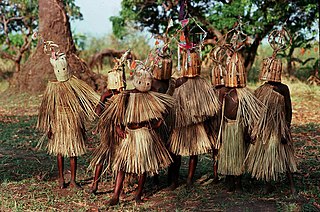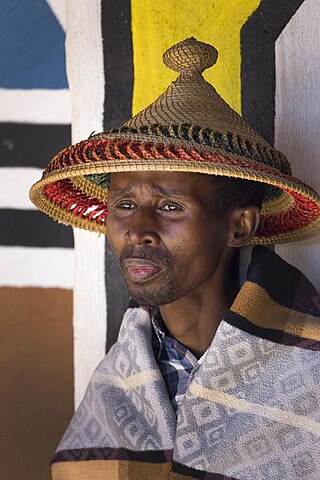 | |
| Birth | |
| Naming Ceremony | Buddhism * Christianity * Hinduism * Judaism *Humanism * Islam * Wicca * Druidism |
|---|---|
| Adolescence | |
| Coming of age (Cultural) | Australia * NZ * UK * Ireland * Poland * Ukraine * Scandinavia * Humanist * Latin America * United States * Canada * Spain * Japan * Papua * New Guinea *Vietnam * Indonesia * Pygmies * Korea *Communitas * Philippines * Khmer |
| Marriage | |
| Religious Aspects Of Weddings | Christian views on marriage * Hindu wedding * Jewish wedding * Marriage in Islam * Chinese wedding |
| Death | |
| Religious Funerals | Buddhist funeral * Christian burial * Islamic funeral * Bereavement in Judaism * Sikh * Antyesti |
A life cycle ritual is a ceremony to mark a change in a person's biological or social status at various phases throughout life. [1] Such practices are found in many societies and are often based on traditions of a community. [1] Life cycle rituals may also have religious significance that is stemmed from different ideals and beliefs. [1]
Contents
- Examples of life cycle rituals
- Birth
- Adolescence
- Marriage
- Death
- Classification of life cycle rituals
- Psychological impact
- Cultural impact
- Modern-day changes
- References
A life cycle ritual can best be described as a ceremony undergone by an individual when he or she enters one phase of life to another. The term may be synonymous with ‘rite of passage’ as described by Arnold van Gennep in his 1909 work ‘Rite of Passage’. [1] although can be described as more specifically to do with major biological life events such as birth, adolescence, marriage and death. Van Gennep described society as being composed of “…several disparate social groupings”. [1] He further divided these social groupings into either secular (financial strata, for example) or sacred (being born, getting married), the latter being the category most closely associated with life cycle rituals. [1]
Van Gennep classified rituals as broadly belonging to one of three categories: separation, liminal and incorporation. [1] The separation phase involves the individual leaving one group or life phase at a point in time and the incorporation phase involves them joining the new phase. The liminal phase is the transitive phase in between the two where the individual has left one phase but not yet joined the next. [1]
The various phases of the life cycle were described by David Lancy [2] as belonging to six practical categories: 1) Birth and early infancy, which Lancy describes as ritually being the least important given the doubt over the child's survival; 2) Joining the community when the infant's survival is confirmed, usually denoted by a naming ceremony; 3) Separation, marked by removing the child from the mother's breast or when the child starts walking; 4) Getting noticed i.e. when the child starts becoming useful, usually by beginning to help around the house; 5) Adolescence, described as being highly variable across cultures and most commonly being marked by an initiation ceremony and 6) Adulthood, which the author says in most cultures is the point when the individual sires offspring. [2]
Birth rites begin at the indication of pregnancy and through childbirth, continuing for a variable time forth until the required conditions per individual practices are satisfied. [3] Adolescence is also marked by a term known as “Coming of Age”, which is the transition period between childhood and adulthood. [3] In some societies, it is described by Joseph as the change associated with the age of sexual maturity (p. 68), while in others, it is marked as the age where one adopts religious and social responsibility and standing. Initiation rights specifically involve those relating to the age during which sexual maturity is observed. However, this is very variable between societies and religions, and so the definition of maturation is derived mostly from social and cultural beliefs. [3]
Norbeck & Alexander note that in primitive societies detached from the modern developing world, the rites of passage are limited by distinctions of sex and age. [4] There is an absence of social status and developed religious beliefs. In culturally sophisticated societies, there are distinct divisions of labor, social statuses of the leadership and specialised occupations. Individuals are literate and learned, and possess the intellectual thinking to develop personal beliefs based on knowledge and understanding. [4] This results in more organised practices of life cycle rituals, mostly in tune with critical biological and social events. [4]
Life cycle ceremonies possess aspects of the symbolism that are representative of their origin. [4] The practice of each rite and ritual has certain rules and conditions that must be adhered to. These can vary from clothing, venue, time of day, recitation of prayers and order of proceedings. [4]











